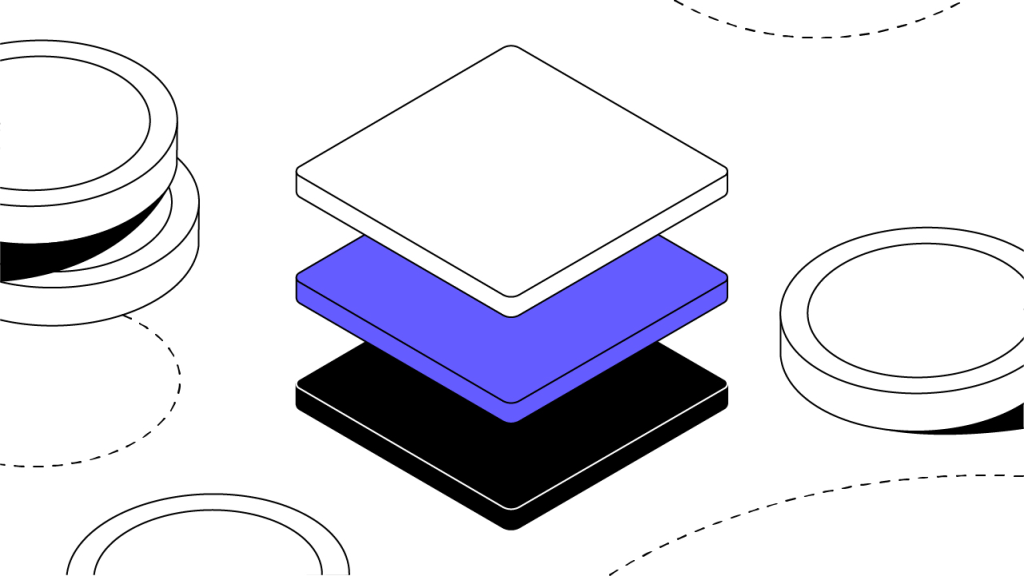What are Layer 2 Solutions, and How Do They Improve Blockchain Scalability?
Blockchain technology is a game-changer in various industries, from finance to supply chain management. However, like any emerging technology, it faces some challenges. One of the most prominent issues is scalability. As more users join blockchain networks and demand for transactions increases, the system can become slow and expensive. That’s where Layer 2 solutions come into play. But what exactly are they, and how do they improve blockchain scalability? Let’s break it down.
Understanding Layer 1 vs. Layer 2 in Blockchain
To appreciate the role of Layer 2 solutions, we first need to understand the difference between Layer 1 and Layer 2.
Layer 1 refers to the base level of a blockchain, like Bitcoin or Ethereum. This is the core protocol that handles transactions and consensus mechanisms (like Proof of Work or Proof of Stake). While these blockchains are secure and decentralized, they struggle with handling a high volume of transactions quickly and cost-effectively.
Layer 2 is built on top of the base layer. These solutions are designed to process transactions off the main blockchain, relieving the main network of some of its load, which can result in faster, cheaper, and more efficient transactions.
Think of Layer 1 as the main highway where all the traffic (transactions) flows, and Layer 2 as side roads that allow traffic to bypass congestion, making the overall system smoother and faster.
How Do Layer 2 Solutions Improve Blockchain Scalability?
Faster Transactions
Layer 2 solutions help improve transaction speed by processing transactions off-chain or in a more efficient way. With Layer 2, transactions don’t need to be validated by every node on the main blockchain, which significantly reduces the time it takes to confirm a transaction.
For instance, in Ethereum, transactions can sometimes take several minutes or even longer, especially when the network is congested. Layer 2 solutions like Optimistic Rollups and ZK-Rollups bundle multiple transactions and submit them together in a single batch to Layer 1, which speeds up the process.
Lower Transaction Fees
With Layer 1 blockchains, every transaction requires a fee, which can skyrocket during periods of high demand. By shifting transaction processing off-chain or using more efficient methods, Layer 2 solutions can dramatically lower these fees. For users, this means they can send small payments without worrying about high transaction costs.
For example, Polygon, a popular Layer 2 solution for Ethereum, has reduced gas fees significantly by processing transactions on its own side chain while still using Ethereum for final settlement.
Increased Throughput
Throughput refers to the number of transactions a network can handle per second (TPS). The more transactions a network can process, the faster it can scale to meet growing demand. Layer 2 solutions improve throughput by taking on a large portion of the transaction load, allowing the underlying Layer 1 blockchain to focus on confirming the validity of larger batches of transactions.
Lightning Network, a Layer 2 solution for Bitcoin, increases Bitcoin’s transaction throughput by allowing users to create off-chain payment channels. These channels can process thousands of transactions off the main blockchain, only settling on the Bitcoin blockchain when necessary.
Enhanced User Experience
With faster transaction speeds and lower fees, the user experience improves dramatically. Layer 2 solutions make blockchain more practical and accessible for everyday use, whether for microtransactions, gaming, or decentralized finance (DeFi) applications.
For example, in the world of gaming, Layer 2 solutions help players make in-game purchases, transfer assets, and interact with decentralized systems in real time without delays or exorbitant costs.
Popular Layer 2 Solutions
There are several Layer 2 solutions, each designed to address specific scalability challenges. Here are a few of the most prominent:
Optimistic Rollups
These solutions bundle multiple transactions into one and only submit a summary to Layer 1. They assume that the majority of transactions are valid, but they include a dispute resolution mechanism for fraud detection if necessary. Optimism and Arbitrum are well-known projects using Optimistic Rollups.
ZK-Rollups
Similar to Optimistic Rollups, but instead of assuming validity, ZK-Rollups use zero-knowledge proofs to verify transactions. This makes them more efficient and secure. zkSync is a popular ZK-Rollup solution on Ethereum.
State Channels
State channels allow users to create private two-way channels off-chain, where they can transact as many times as they like without involving the main blockchain. Only the final state of the channel is recorded on-chain. The Lightning Network for Bitcoin is a prime example.
Plasma
Plasma is a framework that allows the creation of child blockchains attached to the main blockchain (Layer 1). These child chains can process transactions independently, then periodically commit results back to the main chain. OmiseGO (now known as OMG Network) uses Plasma to scale Ethereum.
The Future of Layer 2 Solutions
Layer 2 solutions are poised to play a major role in the future of blockchain. They solve some of the most pressing issues related to scalability, speed, and cost, making blockchain technology more practical for everyday use. As blockchain adoption grows, Layer 2 will likely continue to evolve, with new and improved solutions that push the boundaries of what’s possible.
In the meantime, users, developers, and businesses can leverage these technologies to build faster, more efficient applications and improve the blockchain experience for everyone.
Conclusion
Layer 2 solutions are essential in improving blockchain scalability by reducing transaction times, lowering costs, and increasing throughput. By alleviating congestion on the main blockchain, these solutions pave the way for broader adoption of blockchain technology across various sectors. Whether you’re a crypto enthusiast, a developer, or a business looking to implement blockchain, understanding Layer 2 solutions is key to unlocking the full potential of this transformative technology.

